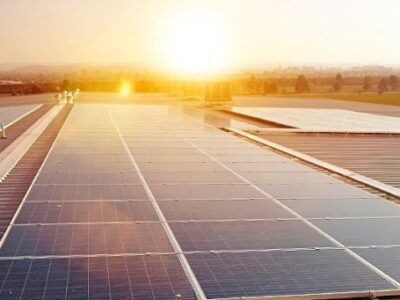A large ribbon of the Atlantic won the designation of a priority offshore wind zone earlier this week. Following bipartisan support for offshore wind development tax credits in the 2020 Coronavirus Relief Bill, the Biden Administration announced its plan to develop a powerful offshore wind presence by 2030. The Administration’s ultimate goal is to generate 30,000 MW of energy from offshore wind by 2030, enough energy to power over 10 million homes. In addition to avoiding 78 million metric tons of CO2 emissions annually, this 30-gigawatt goal will create 44,000 construction jobs, an additional 33,000 onshore supporting jobs, and trigger $12 billion in capital investments per year. Offshore wind hasn’t taken off in the United States, however, the first utility-scale offshore wind farm, Vineyard Wind, is set to begin construction this summer. As the United States begins to prioritize clean energy generation, offshore wind development is set for a major windfall.
Stretching between Long Island and the Jersey Shore, the new “Wind Energy Area” announced earlier this week is just the start. Developing in this relatively shallow swatch of the Atlantic Ocean should create approximately 25,000 construction jobs and an additional 7,000 community support jobs. The Wind Energy Area is located close to the largest metropolitan population center in the United States and could bring clean, cheap energy to more than 20 million people. More importantly, this project will galvanize the future of offshore wind, demonstrating how the development of offshore wind has the potential to create high-paying clean energy jobs, bolster the United States supply chain, and generate millions of watts of clean electricity by harnessing the country’s raw renewable resources.
To kick start the development, the White House announced they were accelerating the permitting process for offshore wind projects in the Atlantic, offering $3 billion in federal loans guarantees for offshore wind development and upgrades, as well as investing $230 million to improve port infrastructure and facilitate the construction of offshore wind. Moreover, the federal government will be investing in two new U.S. factories for each of the major components of offshore wind turbines including blades, towers, and undersea cables. As many as six new offshore wind installation vessels will be built to facilitate the construction, each representing an investment between $250 and $500 million. To accommodate all of this construction, the federal government is investing in U.S. steel, with over seven million tons required for construction.
Offshore wind development doesn’t only benefit the coastlines of the United States. While the majority of offshore wind projects will bring jobs, money, and energy to the Pacific, Atlantic, and Gulf shores, the economic benefits will resonate throughout the entire country. “The industry will also spawn new supply chains that stretch into America’s heartland, as illustrated by the 10,000 tons of domestic steel that workers in Alabama and West Virginia are supplying to a Texas shipyard where Dominion Energy is building the Nation’s first Jones Act compliant wind turbine installation vessel,” The White House shared in a statement.
The ultimate goal of these investments is not only to generate clean, reliable energy but to revitalize the American economy and build prosperity for the middle class. “This offshore wind goal is proof of our commitment to using American ingenuity and might to invest in our nation, advance our own energy security, and combat the climate crisis,” said Secretary of Energy Jennifer M. Granholm. “DOE is going to marshal every resource we have to get as many American companies, using as many sheets of American steel, employing as many American workers as possible in offshore wind energy—driving economic growth from coast to coast.”





